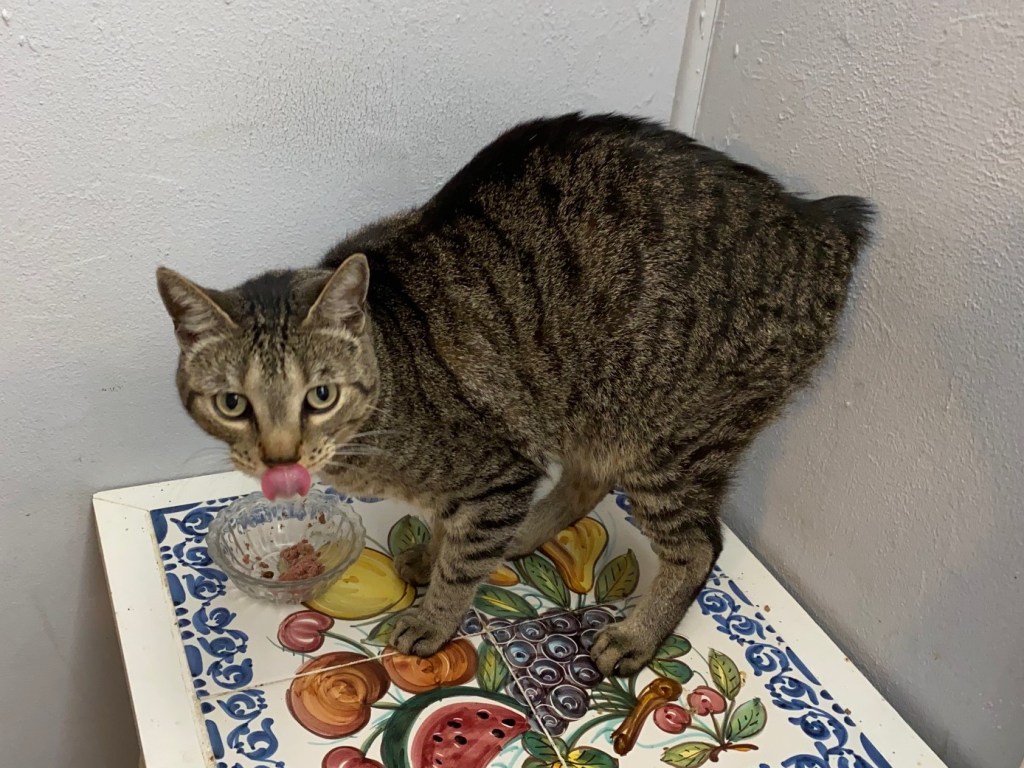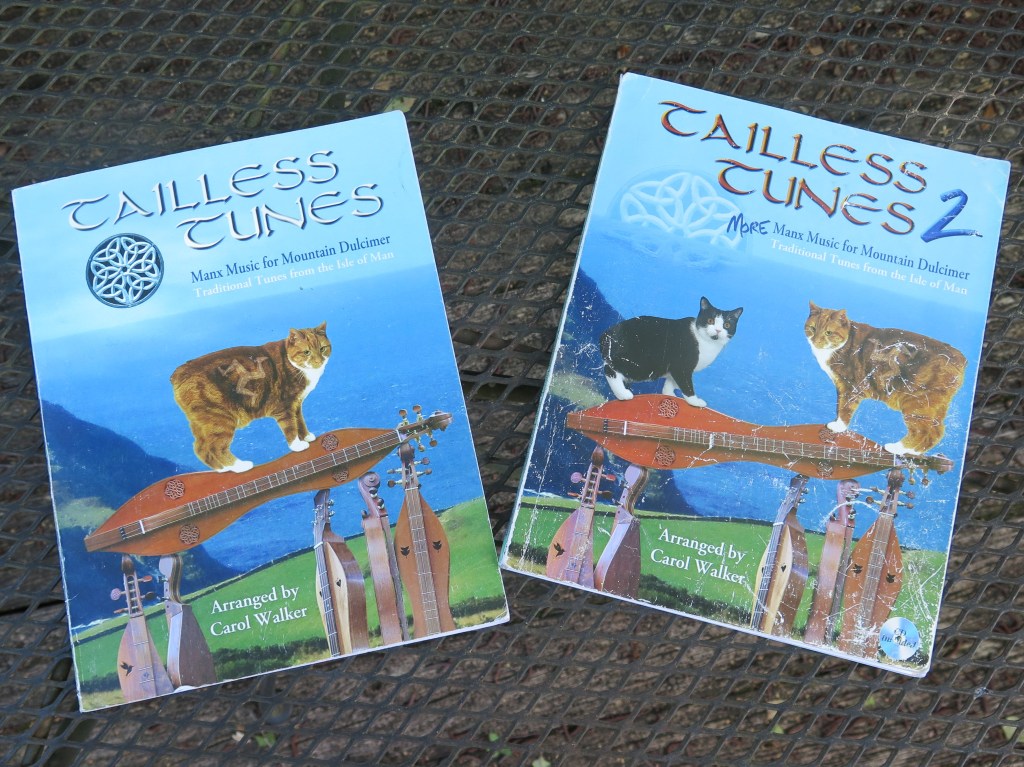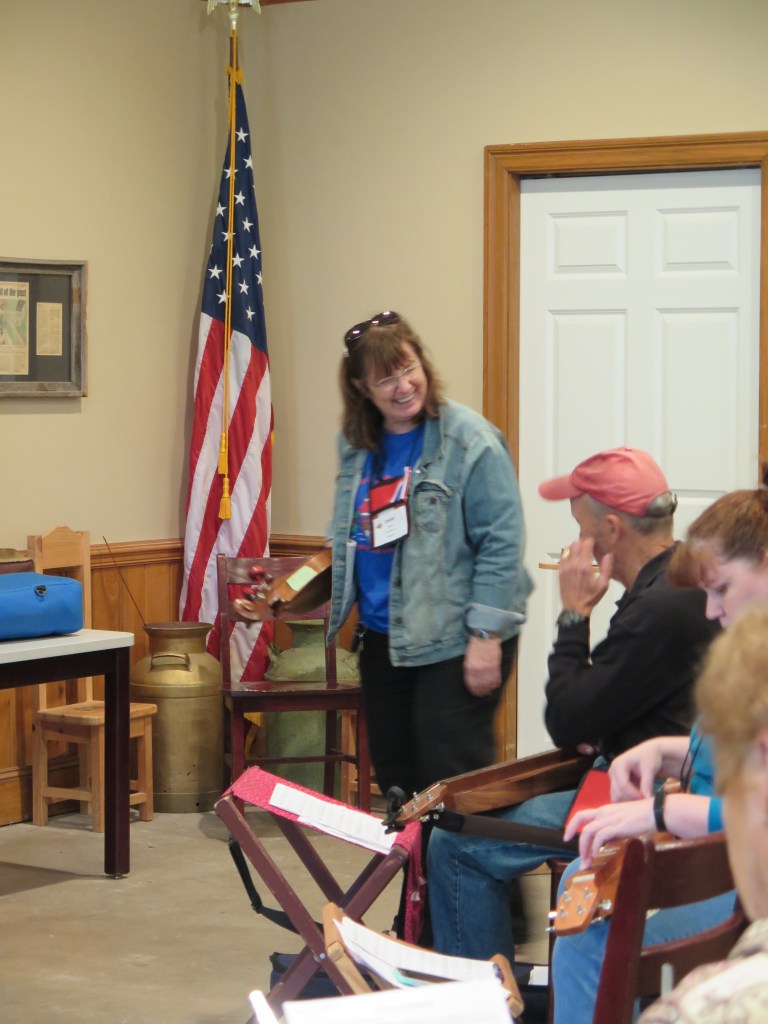Every now and then I play a song on my mountain dulcimer that I just can’t get out of my head. And so I’ve been playing the tune, “Are You a Maid or a Married Waman,” over and over. I typically play my dulcimer late at night. Playing a song repetitively helps me relax; especially playing a tune that is melodic and somewhat simple. I haven’t gotten tired of this tune yet. The song is found in the “Tailless Tunes 2” book of dulcimer music by Carol Walker. Manx Cats are tailless, hence the name of the book.

The Manx cat originated on “Isle of Man.” All the tunes in these two books represent traditional and folk music from this island. The “Isle of Man” is a small island (221 square miles) which is located in the north Irish Sea equidistant between England, Ireland, Scotland and Wales. The Isle of Man is considered to be a “Crown Dependency.” It is not part of the United Kingdom, but rather it is a self-governing possession of the British Crown. The music of the Isle of Man represents influences from neighboring Islands including Celtic, Scottish and English music.

Carol Walker has authored two volumes of “Tailless Tunes” books. She put alot of research and thought into collecting the songs for these two books. The tunes represent a broad sampling of the folk and traditional music of the Isle of Man. The dulcimer tablature and tune arrangements are very playable. And I have to stress that these tunes are “arrangements” of the music; the tablature is more than just a repetition of the melody line. The harmony notes, fingerpicking and strumming patterns are carefully chosen and make for very pleasing arrangements of the tunes. Carol used several sources to write the books including old manuscripts of Isle of Man music, a visit to the island and resourcing Isle of Man musicians.

Manx Cats
Meet “Pip” who is Marie’s Manx cat. Pip is fairly shy but will make an appearance if coaxed with a treat. Pip has many characteristics of native Manx cats.
The Manx cat is a breed of cat which has been recognized since the late 1800’s. The cats originated on the Isle of Man. The distinguishing feature is that the cats have no tail or just a stub of a tail which is a genetic feature. Their faces are round and their hind legs are longer than their front legs. They are found in different coats of fur — long or short — and various colors. These cats are great hunters. Possibly they were brought to the Isle of Man on ships where the cats were used for hunting mice. I have to add that these cats are very agile as I once watched Marie’s Manx cat effortlessly jump vertically from the kitchen counter to the top of her kitchen cabinets without knocking over any dishes. It was an amazing feat to watch.
Carol Walker, Musician and Dulcimer Player
Our small group of dulcimer enthusiasts has been playing tunes from Carol Walker’s dulcimer tablature books for six or seven years now although as time passes no one can remember exactly where we first picked up on the “Tailless Tunes” books. (Carol has written dulcimer tablature books for other types of music, too, ranging from familiar children’s tunes to classical music arranged for dulcimer.) Carol Walker is a talented musician with a degree in classical piano plus harp as well as other instruments including bass. She was a choral teacher in New Jersey secondary schools for many years and piano accompanist for various professional groups including as the prestigious Metropolitan Opera and New Jersey Symphony.
Like so many other dulcimer players, Carol purchased her first dulcimer while on vacation in the Appalachian mountains of Kentucky. This was in 1999. And like many of us, she now owns a collection of mountain dulcimers. Carol quickly excelled at playing the dulcimer. She performs at dulcimer festivals and other venues, gives workshops and has written dulcimer books and instructional videos. We invited Carol to come as a featured performer to our 2017 Lagniappe Dulcimer Fete. She made it to Louisiana in her trusty camper and I understand that she had quite an adventure returning home through a snow storm. Add resilience to her attributes.

Now in the age of the Covid-19 pandemic, Carol has adjusted her teaching style and has adapted to the “Zoom” format of virtual dulcimer festivals. Like her books, Carol’s workshops are well-organized, informative and comfortably paced.
So, if you have the opportunity to participate in one of Carol Walker’s workshops, I’d recommend it.
The Manx Cat Song
If you want to play “Are You a Maid or a Married Woman” then you will need to purchase “Tailless Tunes – 2” book. After all, these are copyrighted song arrangements. See the reference for a link to Carol Walker’s WEB site where you can purchase all her books. It’s the “Music Lady Carol” internet site.
Carol has given permission for me to post “The Manx Cat Song.” It is in the same tablature style as “Are You a Maid or a Married Woman.” “The Manx Cat Song” is simple to play. It a lively tune. Although many of the tunes in “Tailless Tunes” are fingerpicked — the one is strummed across the strings. It is easy to play this tune over and over.
The tunes in the “Tailless Tunes” are primarily traditional folk tunes. They are melodic and playable for advanced novice and intermediate dulcimer players. The tunes make a refreshing change from all the fiddle tunes found in dulcimer jam sessions. Enjoy learning some new “Isle of Man” and Manx Cat tunes!

Reference:
For information on Carol Walker and purchasing her books, visit her WEB site at:



